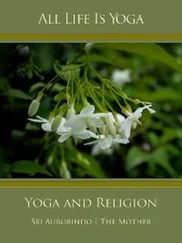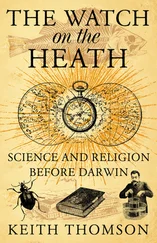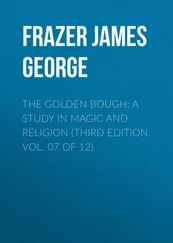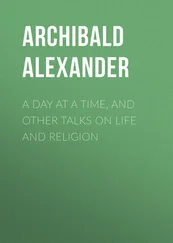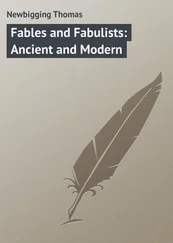Vikernes, Varg - Varg Vikernes - Sorcery and Religion in Ancient Scandinavia
Здесь есть возможность читать онлайн «Vikernes, Varg - Varg Vikernes - Sorcery and Religion in Ancient Scandinavia» весь текст электронной книги совершенно бесплатно (целиком полную версию без сокращений). В некоторых случаях можно слушать аудио, скачать через торрент в формате fb2 и присутствует краткое содержание. Жанр: Старинная литература, на английском языке. Описание произведения, (предисловие) а так же отзывы посетителей доступны на портале библиотеки ЛибКат.
- Название:Varg Vikernes - Sorcery and Religion in Ancient Scandinavia
- Автор:
- Жанр:
- Год:неизвестен
- ISBN:нет данных
- Рейтинг книги:3 / 5. Голосов: 1
-
Избранное:Добавить в избранное
- Отзывы:
-
Ваша оценка:
- 60
- 1
- 2
- 3
- 4
- 5
Varg Vikernes - Sorcery and Religion in Ancient Scandinavia: краткое содержание, описание и аннотация
Предлагаем к чтению аннотацию, описание, краткое содержание или предисловие (зависит от того, что написал сам автор книги «Varg Vikernes - Sorcery and Religion in Ancient Scandinavia»). Если вы не нашли необходимую информацию о книге — напишите в комментариях, мы постараемся отыскать её.
Varg Vikernes - Sorcery and Religion in Ancient Scandinavia — читать онлайн бесплатно полную книгу (весь текст) целиком
Ниже представлен текст книги, разбитый по страницам. Система сохранения места последней прочитанной страницы, позволяет с удобством читать онлайн бесплатно книгу «Varg Vikernes - Sorcery and Religion in Ancient Scandinavia», без необходимости каждый раз заново искать на чём Вы остановились. Поставьте закладку, и сможете в любой момент перейти на страницу, на которой закончили чтение.
Интервал:
Закладка:
The 26 thday of Breiðablik was called Day of Walking (No. Gangdag ). The queen, accompanied by all the girls, picked flowers to make flower wreaths. They put the wreaths on and walked in procession around the fields. In the Stone Age the queen asked the spirits for good crops, and in later ages she blessed the fields herself. Often she sat in a wagon and was pulled around by the girls. The queen carried a torch to scare off the destructive spirits from the field, and she brought water from a holy source. In addition to that, she brought beer and food, for the spirits of the field. The spirits ate the food in form of animals. The queen made holes or just one hole in the field, and placed a juniper bush in it. She poured the contents of an egg and some grain into the hole(s), and then sang a song. For example:
“ Våkn opp, våkn opp, både åker og eng.
Nu har du sovet lenge i seng.
Nu har det vært både snø og regn.
Nu har sommernatten kommet.”
(Eng. " Wake up, wake up, both field and meadow,
you have slept for a long time now
we have seen both rain and snow
the summer night has come now. ")
After this they raised a Maypole and did what they normally did on high festivals, including the procession the day before, to collect food for the feast.
The 27 thday of Breiðablik was called Second Summer Day, and they did the same as they had done on the Day of Walking. The 28 thday of Breiðablik was called Third Summer Day and they did the same as they had done on the Day of Walking. The 8 thday of Nóatun was called the Great Day of Walking (No. Store Gangdag ) and yet another time they did what they had done on the Day of Walking. This was how they woke up the fields after winter.
Easter began the 1 stSunday after the 1 stFull Moon after Vernal Equinox, and was seen as the day Baldr/Bragi (and Nanna/Íðunn) returned from Hel. This was the day the colours of nature returned after the darkness of winter. In the Easter they climbed the tallest mountains in the east, so they could see the Sunrise as early as was possible, on Easter morning. They carried round stones or other round objects with them up into the mountains, all symbols of the Sun, and built cairns on the mountain peaks. They did this to help the Sun rise and fly high again. They ate eggs in the morning and the candy (dried fruit, nuts etc.) left after winter was eaten. This was Íðunn's fruit, that they now, when she would return, could enjoy freely.
The next Sunday, and every Sunday after Easter, until White Sunday (the seventh Sunday after Easter), they gave thanks to the spirits/deities for bestowing upon man all the wealth of nature. Each of these Sundays were celebrated the same way as the Trono Day.
The 13 thDay of Nóatun was called the Night of Small Valborg ("castle of the chosen"), know in Gaelic as Beltane ("the white fire"). This was the day all the deities married, in Valborg, another name for Ásgarðr ("spirit garden"). The winners of the bride races finally could marry and replace the winners of last year's races. They took over (or continued) as queen and king and were to rule until the next Night of Valborg. They swore allegiance holding a hammer (or stone) and a ring, and the ceremony was led by the (last year's) queen. It was celebrated as any other high festival, with processions to collect food and sword dance and everything.
The Sun and Moon married, and because of that this was also known as Honey Moon, honey being a symbol of the Sun. The bride and groom, the chosen ones, had to travel to Valborg to get married, and therefore the actual wedding has to us become known as a journey.
The Night of Small Valborg was a day devoted to weddings because it was the first Friday 13 thafter Baldr and Nanna had returned form Hel. The mythological context was the journey of Skanþan/Skaði to Ásgarðr, where he married the most beautiful of the goddesses. Just as a groom no longer needed to look for a bride when married, this day marked the transition from hunting time to sowing time.
Every Friday 13 thafter the Night of Small Valborg and until Autumnal Equinox a new wedding was held, for the god and goddess, the king and queen, and all these weddings were celebrated in the same manner. When Christianity arrived, with a new calendar, where Friday the 13 thalmost never occurred, these weddings were moved to Sundays.
The 15 thday of Nóatun was called Cuckoo Day and was a day when it was possible to tell if this was going to be a good year or not. If you heard the cuckoo in the north everything went as planned. If you heard it in the south you could harvest in dry weather. If you heard it in the west it meant sickness and death. If you heard it in the east you would have a happy marriage. The cuckoo was of course a manifestation of a spirit.
The 27 thday of Nóatun was the Night of Great Valborg, and this was celebrated in the same way as the Trono Day.
The 8 thday of Glítnir was called Bear Wake (No. Bjørnevåk ), and was the day the bear was believed to wake up and leave its lair. Höðr was, in other words, back from the grave, reborn and ready to kill Baldr again. We know the religious content of Bear Wake from the myth about Fenrir. The gods could not let the dangerous Fenrir (Höðr) walk about freely, after he returned (i. e. was born again by the Earth goddess), so they decided to tie him up. They struggled to achieve this, and in the process Týr lost his hand. Fenrir bit it right off. Týr was the Sky god, and the Sun and Moon were his two palms, and the eating of his one hand was explained by both the lunar eclipse and Sunset.
All the Sundays of Glítnir were days when all disputes were discussed, at the Thing ("court/parliament"). The king represented Forseti (another name for Týr) and judged in all cases.
The 1 stday of Folkvangr was called Source Drinking (No. Kildedrikking ), and on this day they gathered around the holy sources. They placed pairs of figures made of leaves, as manifestations of Freyja and her brother and husband Freyr, by the sources and drank the holy water, that was believed to be good for health on this day in particular. The day was otherwise celebrated like the Trono Day.
The 13 thof Folkvangr was the Summer Solstice, a festival for good luck in war. They did the same as they had done on the Day of Walking, but the field and meadow was now already awake, so the queen and girls went in procession to ward off any harmful spirits. She sang a song. For example:
“ Nu vil jeg syfte (rense) sørken av åkeren min
så den blir både ren og fin;
så setter jeg i den older og brisk,
så den holder seg sterk og frisk .”
(Eng. " I clean the filth from my field now,
to make it both clean and nice,
and I place in it a juniper bough,
to keep it healthy and strong. ")
The Summer Solstice was the birthday of both Freyja and the Sun itself. It was the day she rose up from the sea, wearing only a wreath of flowers on her head. She was called Vanadís ("beautiful goddess"), and the Romans called her Venus ("beautiful"), because she was the most beautiful of all the goddesses. The queen represented her, and was given her name. Because of that we still call married women Frue (in Norwegian) or Frau (in German), both deriving from her name.
Freyja was also known as Frigg, a name that means exactly the same as Freyja, and was a daughter of Njörðr and Skaði, the sea and the river that flowed into the sea. They celebrated her birthday by lighting bonfires along the water's edge, so that from a distance it looked as if this long chain of fires was a necklace, known from the mythology as Brisingamen ("the necklace of fire"). It was a custom to dance and sing by the burial mounds on the birthdays, and on Freyja's birthday the queen and young girls also took a bath in the sea. When they emerged from the sea they represented Freyja being born from the sea. They then jumped naked through the flames from the fires, to drive away destructive spirits. It was, in addition to this, a day when young couples were engaged, and the day was otherwise celebrated just like the Trono Day.
Читать дальшеИнтервал:
Закладка:
Похожие книги на «Varg Vikernes - Sorcery and Religion in Ancient Scandinavia»
Представляем Вашему вниманию похожие книги на «Varg Vikernes - Sorcery and Religion in Ancient Scandinavia» списком для выбора. Мы отобрали схожую по названию и смыслу литературу в надежде предоставить читателям больше вариантов отыскать новые, интересные, ещё непрочитанные произведения.
Обсуждение, отзывы о книге «Varg Vikernes - Sorcery and Religion in Ancient Scandinavia» и просто собственные мнения читателей. Оставьте ваши комментарии, напишите, что Вы думаете о произведении, его смысле или главных героях. Укажите что конкретно понравилось, а что нет, и почему Вы так считаете.

